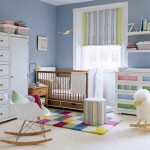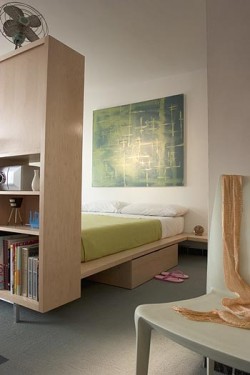
The old-fashioned nursery had the right basic ideas. It was essentially a room given over to children for which most parents were content to provide, if they could, a well-ventilated space with somewhere to sleep, plenty of floor/play space, somewhere to sit, some sort of games, drawing, work surface and reasonable storage.
In a sense this sort of framework is still in force today - but with some big differences. First, many of the clever and colorful ideas produced for nursery and primary schools to provide inÂÂtellectual stimulus for their pupils have begun to trickle back into the home in the form of educational playÂÂthings, body-building structures and early learnÂÂing apparatus. And second, children today belong to a techÂÂnologically sophisticated generaÂÂtion where the computer is becomÂÂing as commonplace as the teleÂÂvision, and where audio-visual equipment replaces building bricks and snakes and ladders almost as a matter of course.
This means that any forward planning at the infant stage should involve thinking at least about the probability of having to make room for such things. While it is imposÂÂsible to project several years ahead and visualize exactly what amazing new inventions are going to invade our lives, let alone what size and shape they are going to be or how many extra electric points and outÂÂlets they’ll need, what you can do is think in terms of flexible arrangeÂÂments in the home.
Parents of young infants will find it difficult to imagine anything at all beyond the immediate world of nappies and feeds, cots and baths but it doesn’t last forever and if that’s all they’ve planned for, they’ll find the room soon outÂÂgrown and unsuitÂÂable for the next stage in their children’s lives. The time, money and effort spent on creating a room the chilÂÂdren don’t want to use will be wasted.
So, when you are faced with this empty room that you want to take care of your children’s needs for the next eighteen years, rememÂÂber, as you make your plans, that adÂÂaptability is the name of the game.

 How clearly you can see the outline of your space depends partly on whether the house is new to you or all too familiar. Have you just moved in, full of plans, knowing the space is limited but inspired by good intentions to make the most of it? If so, then you are seeing It with fresh eyes and clear sight, unjaded by experience. However, you do not know it well enough to envisage how you will live in it, how the space works, where the light falls, how that awkward door opens the wrong way and blocks the corridor… Give yourself time to get used to your new home, to get a feel for how you will live In it. Do not rush straight In with your most ambitious and imaginative plans.
How clearly you can see the outline of your space depends partly on whether the house is new to you or all too familiar. Have you just moved in, full of plans, knowing the space is limited but inspired by good intentions to make the most of it? If so, then you are seeing It with fresh eyes and clear sight, unjaded by experience. However, you do not know it well enough to envisage how you will live in it, how the space works, where the light falls, how that awkward door opens the wrong way and blocks the corridor… Give yourself time to get used to your new home, to get a feel for how you will live In it. Do not rush straight In with your most ambitious and imaginative plans. If you’re starting from scratch your options are wide open; you have the luxury of choosing the size and location, even the layout of your bedroom. On the other hand, if you’re dealing with a bedroom that already exists, there is a good chance you will be limited by space and layout restrictions. Although your options may seem limited, there are more alternatives to choose from than one might think.
If you’re starting from scratch your options are wide open; you have the luxury of choosing the size and location, even the layout of your bedroom. On the other hand, if you’re dealing with a bedroom that already exists, there is a good chance you will be limited by space and layout restrictions. Although your options may seem limited, there are more alternatives to choose from than one might think.
